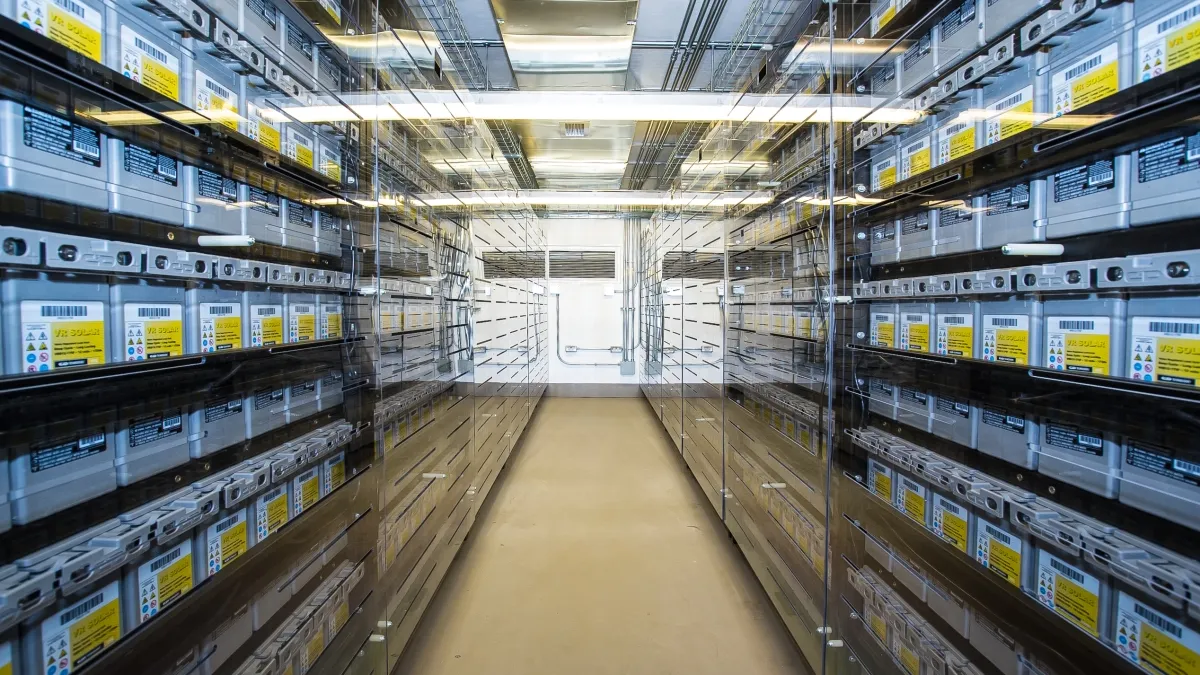Editor's Note: The following is a guest post contributed by Jon Wellinghoff, the former chairman of the Federal Energy Regulatory Commission and currently a partner at law firm Stoel Rives LLP. Wellinghoff wrote this post on behalf of The Energy Freedom Coalition of America, a new advocacy group for rooftop solar and other clean energy resources. If you or one of your colleagues is interested in submitting a Viewpoint article, please review these guidelines.
For a product that we carry in our pockets every day, there has been a surprisingly skeptical attitude taken towards energy storage technologies used on the electric grid. However, that attitude is changing as policy makers as well as consumers begin to realize the potential of energy storage to control energy costs and improve grid efficiency.
There are many battery chemistries, with each manufacturer touting its own recipe that offers just the right performance characteristics for specific applications and products to support renewable integration and other grid services. Some recipes are better at providing short bursts of high power output, much like a sprinter running a hundred yard dash — quick bursts with high acceleration. Others are marathoners, able to discharge a steady stream of electricity over many hours. But all types can provide clean, safe, reliable, and cost-effective services to the electric grid and its millions of power hungry customers. Only in the last few years, bolstered by consistent policy support for storage projects in California, has storage finally been able to establish a foothold in the next-generation power grid.
Storage can digitize the grid, making the evolutionary leap from analog to digital, by offering consumers a suite of connected resources that can provide valuable grid services. These resources can elegantly and automatically manage power to ebb and flow with electricity supply and demand as an alternative to brute force approaches used in most grids today, which basically entail turning large power plants on and off. Batteries are able to instantaneously respond to signals from controlling software to manage critical grid needs such as voltage variation, frequency regulation, absorbing excess generation, shifting peak demand to off peak periods, and keeping the lights on when the grid cannot. What’s more is that a single asset can provide many of these services simultaneously or shift between them based on economic signals or grid reliability needs. Some of these services already have market price offerings in place through California’s independent electric market system operator, CAISO.
Digital grid and storage technologies are now being designed, developed, and deployed by a variety of companies. In California, the Self-Generation Incentive Program (SGIP), first established in 2001 to support solar and distributed generation technologies, evolved to include storage in recent years. In just four years, over 1,200 storage projects from more than 15 vendors, such as Tesla, SolarCity, and Stem, are being actively deployed to provide grid services, peak load reduction, while also reducing greenhouse gas emissions and integrating clean energy into the grid. This program has been a critical component of the storage industry’s success in California by helping provide a bridge from where we are today, where storage technologies, applications, regulatory rules, and business models are evolving, to a future where the current barriers that prevent more widespread adoption of energy storage have been resolved.
Recently, the staff of the California Public Utility Commission’s Energy Division issued a report proposing a number of significant reforms to this program. Most notably, staff’s proposed reforms recognize the importance of providing additional support for storage technologies, proposing to allocate 75% of the budget to specifically support energy storage technologies, while removing high emitting natural gas technologies from the program.
The Commission should adopt staff’s recommendations, which are in many ways a microcosm of the greater shift happening on the electric grid more broadly, moving towards a digital innovative electric grid and away from high emission natural gas technologies that can not provide the grid services we need in California. This program and others such as the 2020 statewide energy storage target and 50% renewable energy goal by 2030 will pave the way for storage to economically provide value to customers under a revitalized digital grid.
To achieve these goals, storage must continue to be supported as a valuable new grid asset that is as commonplace on the grid as it is in our pockets.













